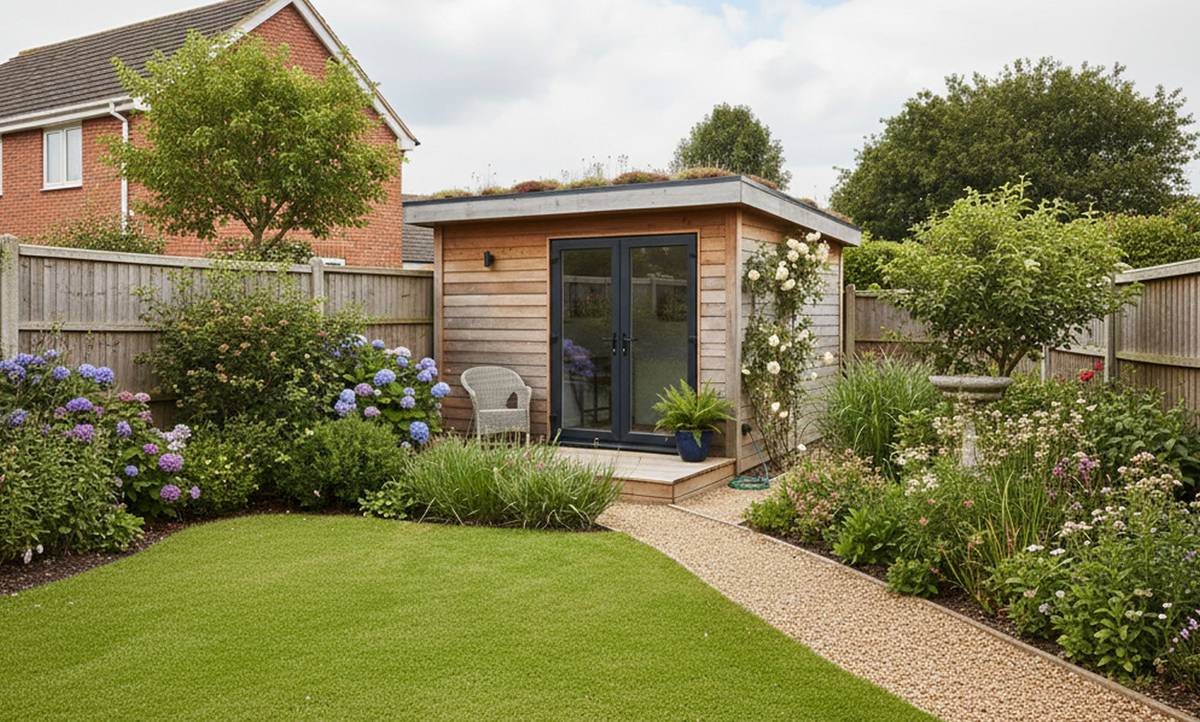How to extend Wi-Fi to your outdoor office
With more of us working from home, the humble garden shed has had quite the glow-up. Ideal for those without the space inside and wanting a distraction-free zone, garden offices are the perfect solution for making your WFH dreams come true. But there’s one thing you can’t do without – a decent broadband connection.
If your Wi-Fi signal drops out the moment you step outside, don’t despair. There are several reliable ways to extend your internet into the garden. Here’s how to get connected.
1. Try a Wi-Fi range extender
The simplest and cheapest option is to use a Wi-Fi booster (also called a range extender). These plug into a socket in your house and rebroadcast your Wi-Fi signal further afield.
- Best for: Garden offices close to the house (around 10–15 metres).
- Pros: Affordable, quick to set up.
- Cons: Signal can be weaker and speeds slower the further you go.
2. Use powerline adapters
Powerline adapters use your home’s electrical wiring to carry broadband. You plug one adapter into a socket near your router, and another into a socket in your garden office.
- Best for: Offices with electricity already installed.
- Pros: More reliable than Wi-Fi extenders, simple plug-and-play.
- Cons: Performance depends on the quality of your wiring, and distance can still be an issue.
3. Run an ethernet cable
If you want the most stable and fastest connection, running an outdoor-grade ethernet cable from your router to your garden office is the gold standard.
- Best for: People who need guaranteed high speeds for video calls, large file transfers, or gaming.
- Pros: Rock-solid connection, same speeds as inside your home.
- Cons: Requires drilling or professional installation, and some DIY work to bury or weatherproof the cable.
4. Install a dedicated Wi-Fi access point
Another option is to add an external access point (or mesh Wi-Fi system). These create an extra Wi-Fi hub closer to your office, giving you stronger coverage outdoors.
- Best for: Larger gardens where one router isn’t enough.
- Pros: Flexible, great coverage inside and outside.
- Cons: Costs more than a basic extender.
5. Consider 4G or 5G broadband
If cabling isn’t practical, you could always skip your home Wi-Fi altogether. A 4G or 5G router with a SIM card can provide internet in your garden office, especially if you live in an area with strong mobile coverage.
- Best for: Rural areas or outbuildings far from the house.
- Pros: Completely independent of your home connection.
- Cons: Speeds depend on mobile coverage; data caps may apply.
Tips for success
- Check signal strength first: Walk out to your office with a phone or laptop and test your Wi-Fi before buying kit.
- Think about futureproofing: If you’re already investing in your garden office, consider running Ethernet or installing mesh Wi-Fi for the most reliable setup.
- Weatherproof any cabling: Outdoor-grade Ethernet cable and proper conduit will keep your connection safe from the elements.
Final word
Running broadband to a garden office doesn’t need to be complicated. For some, a simple Wi-Fi booster will do the trick. For others, especially those relying on heavy-duty video calls or large file uploads, a proper Ethernet cable is worth the effort.
Whichever option you choose, getting a strong connection will make your garden office feel like a true extension of your home.




